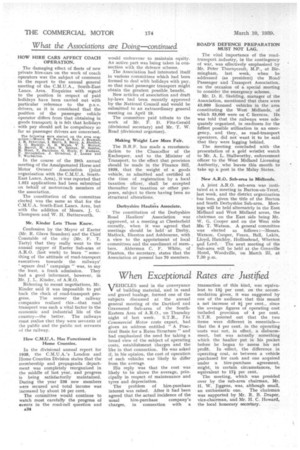When Exceptional Rates are Justified
Page 60

If you've noticed an error in this article please click here to report it so we can fix it.
VEHICLES used in the conveyance V of building material, and in sand and gravel haulage, farmed one of the subjects discussed at the annual general meeting of the Dartford and Gravesend Sub-area of the SouthEastern Area of A.R.O., on Thursday night of last week. S.T.R., The Commercial Motor costs expert, had given an address entitled " A Practical Basis for a Rates Structure " and had emphasized the need for taking a broad view of the subject of operating costs, establishment charges and the like in that connection. He was asked if, in his opinion, the cost of operation of such vehicles was likely to differ from the average.
His reply was that the cost was likely to be above the average, principally in respect of maintenance and tyres and depreciation. The • problem of hire-purchase interest was raiSed. After it had been agreed that the actual incidence of the usual hire-purchase company's charges, in connection with a
transaction of this kind, was equivalent to 13-1per cent, on the accommodation given, it was suggested by one of the audience that this meant a net increase of 9i per cent., since the average figures of operating cost included provision of 4 per cent. S.T.R. pointed out that the two items were different in essentials— that the 4 per cent, in the operating "costs was not, in effect, a. disbursement, but was actually something which the haulier put in his pocket before he began to assess his net profit. In effect, the difference in operating cost, as between a vehicle purchased for cash and one = acquired under a hire-purchase agreement, might, in certain circumstances, be equivalent to I7+ per cent.
The meeting, which was presided over by the sub-area. chairman, Mr. H. W. Jiggens, was, although small, an enthusiastic one. The chairman was supported by Mr. R. B. Draper, vice-chairman, and Mr. H. C. Howard, the local honorary secretary.




























































































